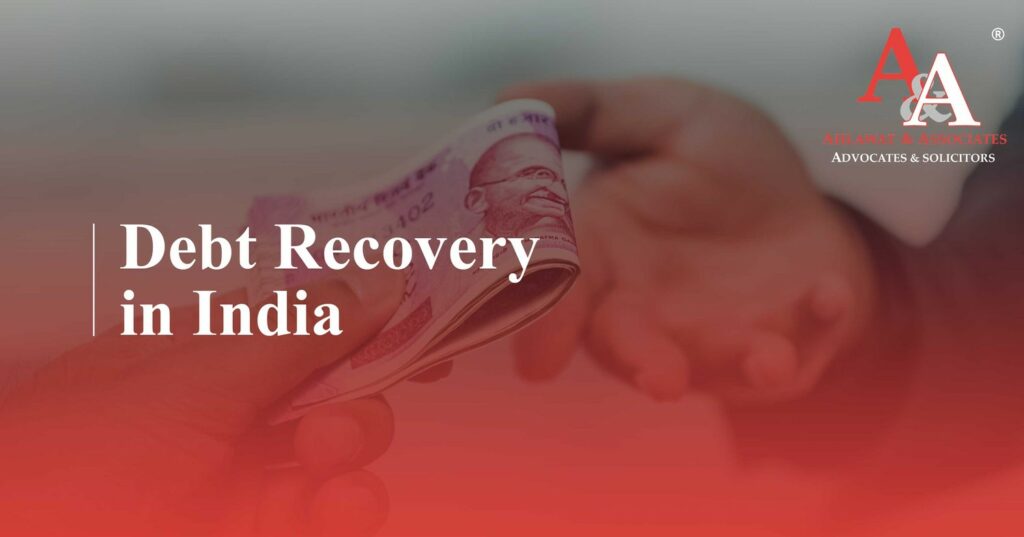
 Shreyika Walia , Upamanyu Banerjee
Shreyika Walia , Upamanyu Banerjee
 November 17, 2022
November 17, 2022
Legal recovery of debts is one of the cornerstones of the Indian legal system and the mainstays for the enforcement of commercial contracts. Under Indian laws there are a number of methods for the recovery of debts depending on the nature of debt, type of debtor as well as any terms and conditions attached to the original loan.
Other factors which come into play are the type of debtor in question, whether the debt was accrued due to malafide intentions and the capacity of the debtors to repay the debt which has been accrued to them as well as the category of the creditor who is instituting proceedings for the recovery of the debt.
The major laws for the recovery of debts by creditors in India are the following:
This law led to the establishment of the Debts Recovery Tribunals (DRT) and Debts Recovery Appellate Tribunals (DRAT) for purposes of recovering of debts due to banks and other financial institutions.
This legislation purports to create a central database of assets on which security interests have been created. The SARFAESI selected secured creditors to take control of collateral properties assisted by the relevant authorities in the district where the collateral is located.
This law was passed in an attempt to consolidate the numerous laws relating to the recovery of debts as well as the legally defined path for the declaration of insolvency by a debtor in the instance of the debtor being unable to pay the sums owed. The IBC also bifurcated creditors into two main categories namely financial creditors whose relationship with the debtor is based purely on a financial contract and operational creditors whose relationship with the debtor arises out of a transactional agreement based on the conduct of an operation. Financial creditors additionally have membership and voting rights in the committee of creditors which are formed to deal with the debt arising out of the declaration of insolvency or bankruptcy by the debtor. The IBC also poses increased obligations on the financial creditor with regards to the appointment of a resolution professional to oversee the insolvency resolution process upon furnishing financial information as a measure of proof of debt. The IBC also brought about the “waterfall mechanism” as a method of determining the division of payments to each of the creditors based on the ratio and quantum of debt they are owed. Cases arising under the IBC are heard by the National Company Law Tribunal (NCLT) with a chance of appeal to the National Company Law Appellate Tribunal (NCLAT).
The passage of this law amends multiple provisions of the SARFAESI Act, the RDBFI Act, the Stamp Act, and the Depositories Act. The law expanded the jurisdictions of the DRTs apart from rearranging the hierarchy of the tribunals. The law also put a restriction on defendants upon receiving a notice from transferring related assets. The scope of applicability of SARFAESI was widened as was the definition of a “secured creditor” to include a debenture trustee. Additionally, the ESIRDA Act also exempted instruments for asset reconstruction from the payment of stamp duty apart from provisioning for electronic filing of documents.
Indian laws provide for a number of ways to initiate proceedings to recover any debt accrued. The most common methods are examined below:
This method may be used by the aggrieved party in certain specific instances by filing cases under the following sections:
Order 37 of the CPC allows a creditor to file a summary suit. A summary suit once instituted assumes plaintiff’s allegations to be true and decides the case in their favour, in the absence of the defendant or a substantial case of the defendant in court within 10 days of institution the suit. A summary suit may not be instituted in cases where legal penalties may be imposed basis the cause of action of the debt or the debt amount is uncertain.
These cases may be instituted as per the Commercial Courts Act, 2015 before the appropriate court of jurisdiction.
This method is used in instances concerning the recovery of money arising from instruments of payment such as cheques and bills. Section 138 of the NI Act provides the basis for the initiating proceedings in instances of bounced cheques with clear timelines and limitations for each step.
This method is the most common method of recovering accrued debts arising out of a commercial arrangement. Ideally the arbitrability of the dispute depends on multiple factors, the primary aspect being the presence of an arbitration clause in the original agreement from which the dispute arises. The primary issues relating to the arbitrability of disputes based on accrued debts is the legal viability of the very concept arbitration of debt recovery. The Supreme Court in its judgement in the case of Booz Allen v SBI Home Finance Limited where the court held that disputes arising out of a right in personam are arbitrable as opposed to disputes arising out of a right in rem but also said that this understanding is hedged by the Doctrine of Necessity and public policy in the subject matter in question will also have to be taken into consideration. This was followed by the apex court judgement in the case of Vidya Drolia vs Durga Trading Corporation wherein the “four-fold test” was laid out which stated that a dispute was not arbitrable where:
The apex court further stated that basis the examination of the issue of arbitration of disputes arising out of accrued debt from the purview of the four-fold test to the concept of arbitrability of debt disputes. This leads to the conclusion that such disputes were not meant to be arbitrable if the lenders are banks and financial institutions as there exist specific tribunals namely the DRT and DRAT thus showing legislative intent regarding the non-arbitrability of such disputes. These actions may be complimented by an application for judgement on admissions under Order XII Rule 6 of the CPC as well.
As of date the laws regarding debt recovery in India remains a patchwork of multiple laws and forums leading to the probability of proceedings being instituted in multiple forums for the same dispute as a method of harassment of the debtor instead of attempting to resolving the debt in the most practical manner. The apex court with its judgement in Vidya Drolia vs Durga Trading has further complicated the matters by excluding arbitration as a workable method of debt recovery for a large portion of the disputes which were arising out of financial debts held by banks and financial institutions.
The institution of DRTs and DRATs under the RDBI Act which was aimed at reducing the number of pending litigations has led to the inundation of these tribunals with cases. This was also the case with regards to the benches of the NCLT and the NCLAT being similarly overburdened. This is coupled with the general inexperience of the non-judicial members of such leading to judges and technical members being unable to give each case the attention it requires thus exposing the main problems of tribunalisation. In light of these issues there exists a need for a comprehensive examination of the debt recovery laws in India and clear framework for solving the practical problems which have cropped up due to the patchwork of laws which exists at present.

Are you an employer wondering what type of benefits you are obligated to provide to employees?
View More
A contract is an agreement between two parties that is enforceable by law. It is crucial
View More
In a world of uncertainty, employment contracts can be immensely valuable to employers
View More















 Cookies Consent
Cookies ConsentWe use cookies to help you navigate efficiently and perform certain functions. You will find detailed information about all cookies under each consent category below. Read more...
 Cookies Consent
Cookies ConsentWe use cookies to help you navigate efficiently and perform certain functions. You will find detailed information about all cookies under each consent category below. Read more...


Comments
Post A Comment
Your email address will not be published *